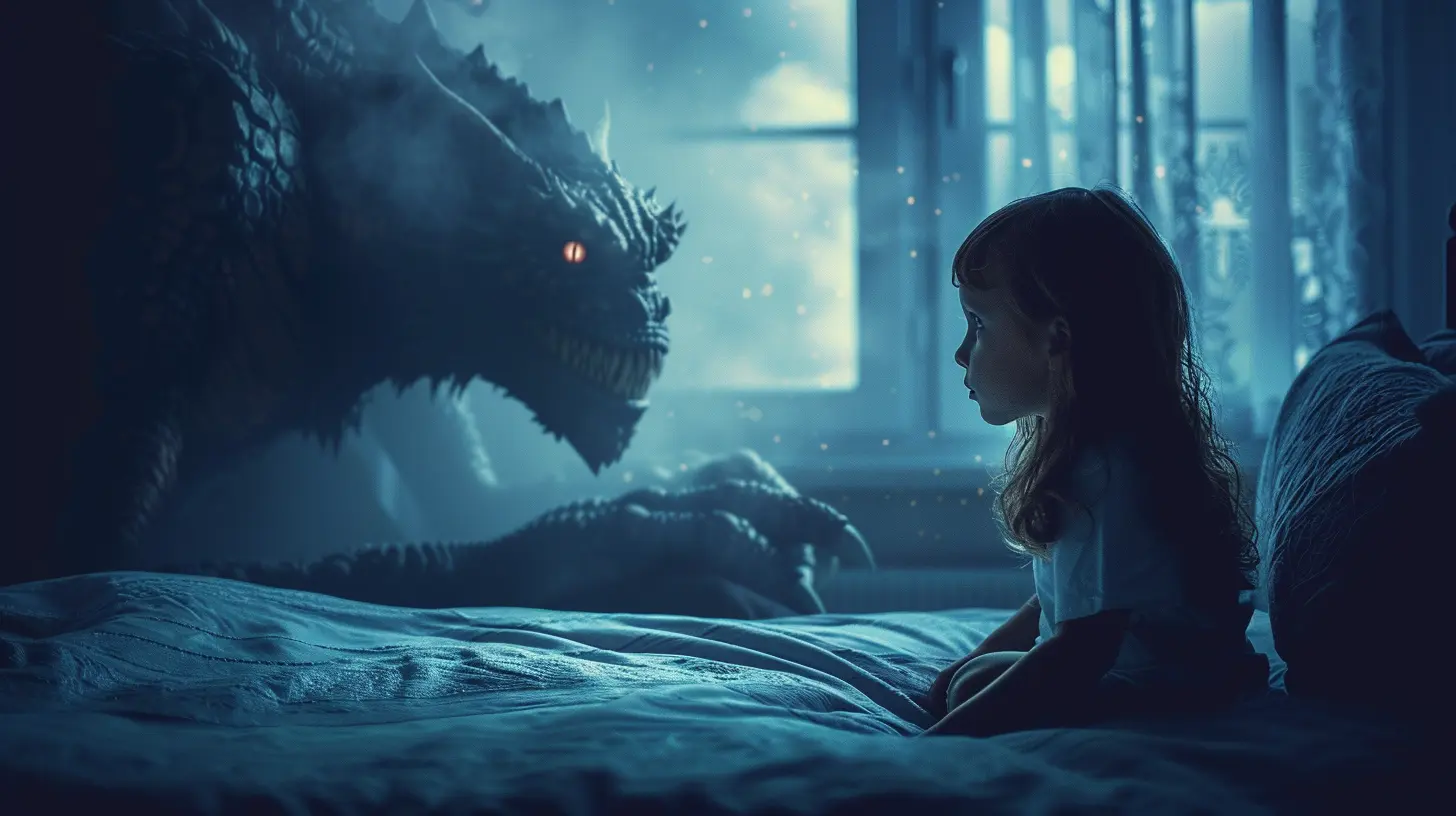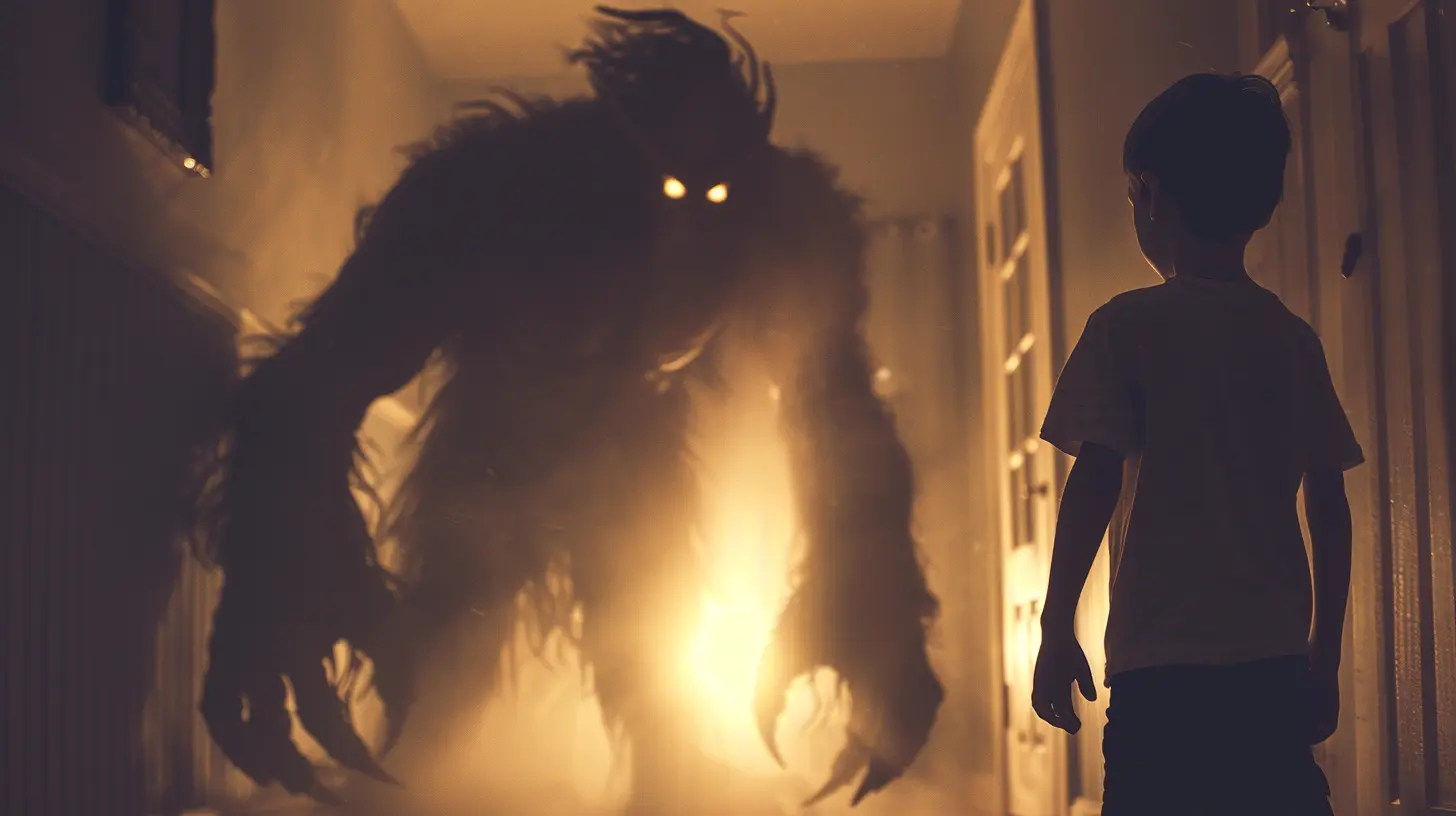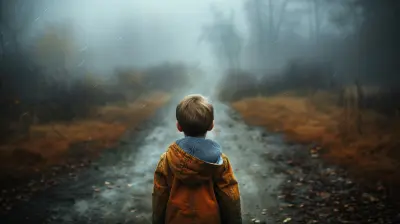When Imaginary Monsters Become Real: Addressing Nighttime Fears
27 October 2025
Let’s be honest—parenting is no walk in the park, especially when bedtime turns into a battle zone. Those innocent little whispers, “Mommy, there’s a monster under my bed,” can send chills down our spines—not because we believe it, but because we know what’s coming next. Tears. Restless nights. And pleading cries that tug hard at our hearts.
Sound familiar?
You’re not alone. Nighttime fears are incredibly common in young children. But when those imaginary monsters start to feel real—when your little one can’t sleep, won’t sleep, and is genuinely terrified—it’s time to dig deeper and handle the fear with empathy, patience, and just a dash of creativity.
Let’s walk through this together. We’ll look at why these fears pop up, how to respond with love and understanding, and what real steps we can take to help our little ones feel safe once the lights go out.
Why Nighttime Fears Feel So Real
Ever notice that fears seem so much bigger in the dark? Nighttime has a funny way of turning the ordinary into the terrifying. A shadow on the wall? Suddenly it’s a claw. That creaky floorboard? Obviously, it’s the sound of something coming…For kids—especially between ages 3 and 8—the line between reality and imagination is super thin. Their little brains are like sponges, absorbing the world but not quite able to interpret everything logically. So a scary cartoon, a loud thunderclap, or even a Halloween costume gone wrong can plant the seed. And once it’s there, it grows—usually right around bedtime.
But why nighttime?
Because it’s quiet. Because they’re alone. And because the dark hides things. It makes perfect sense when you think about it: daytime is full of noise and light and activity. But bedtime strips all that away. The mind slows down, but imagination… oh, it kicks into high gear.
Common Nighttime Fears: More Than Just “Monsters”
So, what exactly are kids afraid of? Let’s break it down:- The dark – Probably the most common culprit.
- Monsters under the bed or in the closet – Classic, but still terrifying.
- Being alone – Separation anxiety is real and strong in young kids.
- Bad dreams or nightmares – Especially if they’ve already experienced one.
- Noises outside – Wind, dogs barking, or even the dishwasher.
Here’s the thing: these fears may seem silly to us, but to a child, they’re 100% real. And dismissing them as “not a big deal” can actually make things worse. Remember, the goal isn’t to prove them wrong—it’s to make them feel safe.
What Not to Do: Avoiding the Common Pitfalls
Before we jump into solutions, let’s talk about what not to do. Because good intentions don't always lead to helpful actions.- Don’t say “It’s just your imagination.” That might be true, but it doesn’t validate how they feel. Imagine telling a scared friend, “You're being silly.” Not very comforting, right?
- Don’t force them to “tough it out.” Facing fears doesn’t mean we abandon empathy. Kids won’t magically become braver by being left to cry it out.
- Don’t mock or tease. It might feel like harmless fun, but teasing can make kids feel embarrassed and less likely to open up next time.
Instead, we want to build trust, create safety, and help them process their fears in a way that feels manageable.
Connecting Through Compassion: How to Validate Their Fear
The most powerful thing you can do when your child says they’re scared? Take a breath, get down to their level, and listen. Really listen.Start with something simple like:
> “I can see you’re really scared. Want to tell me more about it?”
This does a few things:
- It shows you’re taking them seriously.
- It opens the door for them to explain what they’re feeling.
- It lets them know they’re not alone.
Think of it this way: you’re building a bridge into their world, one where monsters are real—but so is love and protection.
Practical Strategies to Help Kids Feel Safe at Night
Now, let’s get into the good stuff. These are tried-and-tested tools you can use to help your little one conquer those nighttime fears—without pretending monsters don’t exist.1. Create a Peaceful Bedtime Routine
Consistency is comforting. Kids thrive on routine because it gives them a sense of control.Try this:
- Warm bath
- Gentle storytime
- Soft lullaby or calming music
- Nightlight on
- Final snuggle with a favorite stuffed animal
Keep it low-key, predictable, and filled with positive attention. Avoid screens an hour before bed, and steer clear of anything overstimulating (like scary shows or loud games).
2. Use “Monster Spray” and Other Creative Tools
Sometimes, a little imagination can be your best friend. If your child believes in monsters… why not give them tools to fight back?Make “Monster Spray” together (just water in a spray bottle with a fun label) and let them spray under the bed or in the closet. It’s not about tricking them—it’s about giving them a sense of control.
Other ideas:
- “Anti-Monster Shield” aka their favorite blanket
- “Magic Light” (a soft nightlight)
- “Bravery Badge” they can wear to bed
They’ll feel more empowered, and that alone can lower anxiety.
3. Offer Reassurance—But Set Loving Boundaries
Yes, your child may want you to stay in their room forever. And while comfort is important, it’s also okay to set limits gently.Try phrases like:
- “I’m going to check on you in five minutes.”
- “You’re safe, and I’ll be nearby.”
Gradual independence is key. Sit on the edge of the bed one night. Then by the door. Then in the hallway. You’re still there—but encouraging confidence, one step at a time.
4. Address Daytime Stressors
Sometimes nighttime fears are a reflection of daytime worries. Has there been a big change recently—like starting school or a new babysitter?Kids don’t always know how to verbalize stress, so it can come out through fear or clinginess at night.
Take a few minutes during the day to talk, draw pictures, or act out feelings with dolls or action figures. Give them tools to name what they’re feeling—and show them how to cope.
5. Use Books and Stories to Normalize Fear
Books can be magic for helping children process emotions. Some favorites that tackle nighttime fears include:- Can’t You Sleep, Little Bear? by Martin Waddell
- There’s a Nightmare in My Closet by Mercer Mayer
- The Dark by Lemony Snicket
Reading about other kids (or bears, or monsters) facing fear shows your child they’re not alone—and that bravery comes in many forms.
When to Seek Extra Help
Most nighttime fears fade with time and a little TLC. But some cases might need a bit more support.Watch for signs like:
- Intense anxiety during the day
- Trouble functioning at school
- Night terrors or recurring nightmares
- Regression (like bedwetting or clinginess)
If you’re concerned, don’t hesitate to talk to your pediatrician or a child therapist. There’s no shame in asking for help—in fact, it’s one of the bravest things you can do as a parent.
Your Presence is Their Light in the Dark
Here’s the truth: the monsters aren't real, but your child’s fear is. And your love? That’s the real magic.When you walk with them through their fears—when you listen without judgment, create safety, and offer comfort—you’re doing more than just chasing away monsters. You’re teaching them that even when the world feels scary, they are never alone.
Nighttime may never be perfect. There might still be nights filled with tears or unexpected wake-ups. But little by little, your calming voice, your patient hugs, and your gentle reassurances will become the soundtrack of their bedtime—and that’s more powerful than any monster could ever be.
Final Thoughts
Yes, addressing nighttime fears takes energy, compassion, and sometimes creativity you didn’t know you had. But it’s worth it. These moments—hard as they are—build trust. Connection. And resilience.So next time your child cries out in the night, remember: You don’t have to fix everything. Just being there, being present… that’s enough.
And when imaginary monsters become real, your love becomes the light that banishes them.
all images in this post were generated using AI tools
Category:
Dealing With FearsAuthor:

Steven McLain
Discussion
rate this article
1 comments
Quade Barron
Nighttime fears often reflect deeper anxieties, mirroring our children's struggles with the unknown. By validating their fears and providing a safe space for exploration, we empower them to confront not only imaginary monsters but also the real challenges they face in life.
October 27, 2025 at 4:10 AM

Steven McLain
Absolutely! Acknowledging and validating these fears helps children build resilience and confidence in facing both their imagined and real-life challenges. Thank you for highlighting this important approach!


